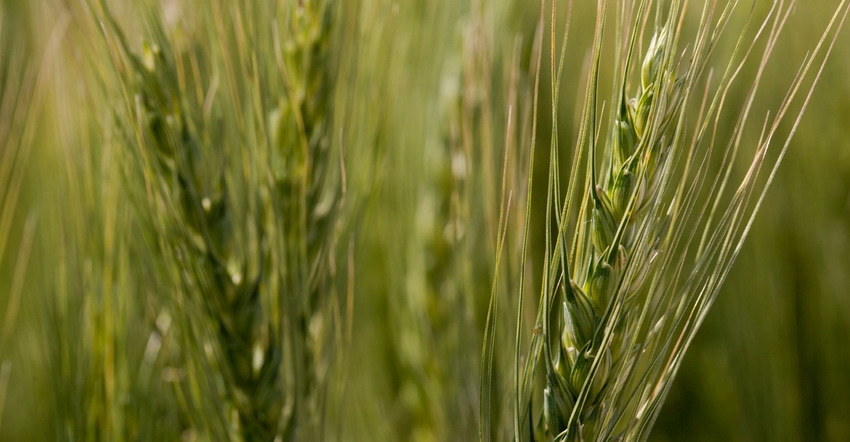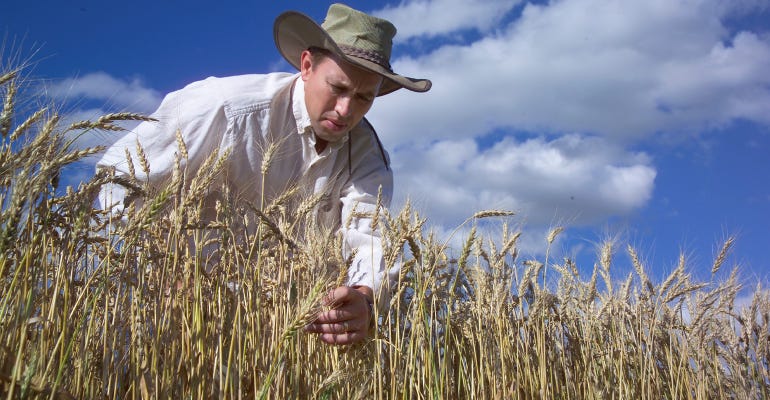June 28, 2019

MN-Washburn is the University of Minnesota’s latest hard red spring wheat variety.
According to researchers, MN-Washburn features excellent straw strength and good overall disease resistance. In particular, it contains the bdv2 gene for resistance to barley yellow dwarf virus, making it an excellent choice in years when BYDV is prevalent, they said.
“In state trials, MN-Washburn stood out due to its consistent yield, superior straw strength and overall disease resistance,” says Jim Anderson, U-M wheat breeder, Department of Agronomy and Plant Genetics. “While lower in protein than other recent University of Minnesota releases, MN-Washburn still provides excellent milling and baking quality.”

FIELD PERFOMRER: In field trials across the state, University of Minnesota wheat breeder Jim Anderson says MN-Washburn has consistent yield, superior straw strength and overall disease resistance.

The new variety is named after the Washburn A flour mill, which was originally built in 1874 in Minneapolis and then rebuilt in 1880 after a fire.
The Washburn A mill was once the largest flour mill in the world and at its peak milled approximately 2 million pounds of flour a day. The Washburn A flour mill, along with others in the area, helped earn Minneapolis the nickname, ‘The Mill City.’
“MN-Washburn is a great all-rounder in addition to being the first hard red spring wheat to contain the bdv2 gene for resistance to BYDV,” says Jochum Wiersma, U-M Extension agronomist and associate professor, College of Food, Agricultural and Natural Resource Sciences.
MN-Washburn joins other U-M spring wheat varieties: Lang-MN (2017), Shelly (2016), Bolles (2015), Linkert (2013) and Rollag (2011). These varieties offer growers a good combination of strong characteristics and perform well across the upper Midwest, according to researchers.
More detailed performance data and comparisons of previously released varieties can be found on the Minnesota Agricultural Experiment Station website.
Prior to being formally named, MN-Washburn was tested as MN10201-4-A.
2019 field days, on-farm trials
MN-Washburn plantings may be previewed July 17 during Crops and Soils Day at the University’s Northwest Research and Outreach Center, Crookston.
Plots of MN-Washburn and competing varieties are also at on-farm trials at the following sites, with two-hour tours scheduled for the days listed:
Fergus Falls, July 9, 9 a.m. (GPS 46.094802, -96.174936)
Oklee, July 10, 9 a.m. (GPS 47.776605, -95.858971)
Humboldt, July 11, 9 a.m. (GPS 48.910487, -97.127943)
Strathcona, July 11, 1 p.m. (GPS 48.572373, -96.157484)
U-M Extension will provide information relevant to the current growing season and answer questions. They encourage farmers to bring samples from their fields for diagnosis and discussion.
Seed availability
MN-Washburn seed will be distributed through Minnesota Crop Improvement Association members for planting in spring 2020. A list of certified seed producers will be available in September on the MCIA website. Or call MCIA at 1-800-510-6242.
Source: Minnesota Agricultural Experiment Station, which is solely responsible for the information provided and is wholly owned by the source. Informa Business Media and all its subsidiaries are not responsible for any of the content contained in this information asset.
You May Also Like




